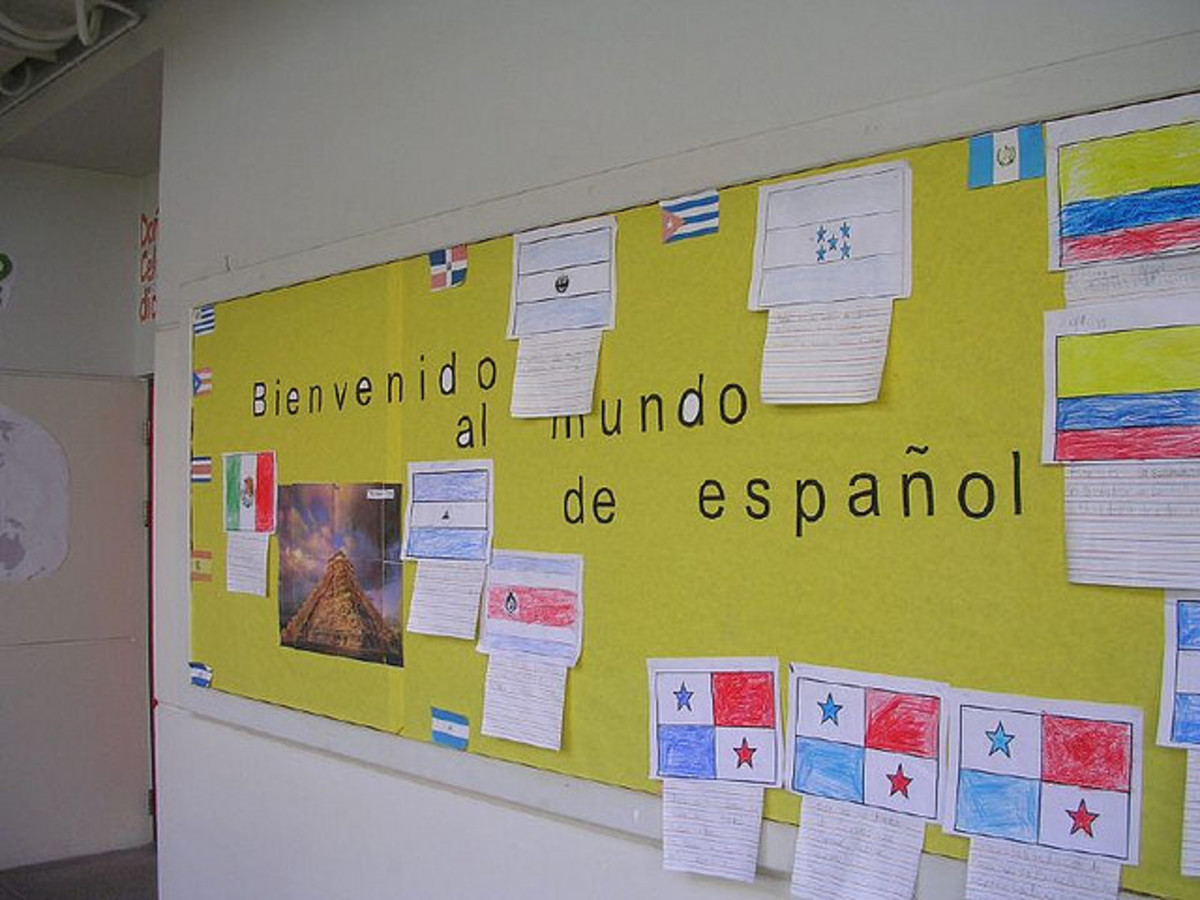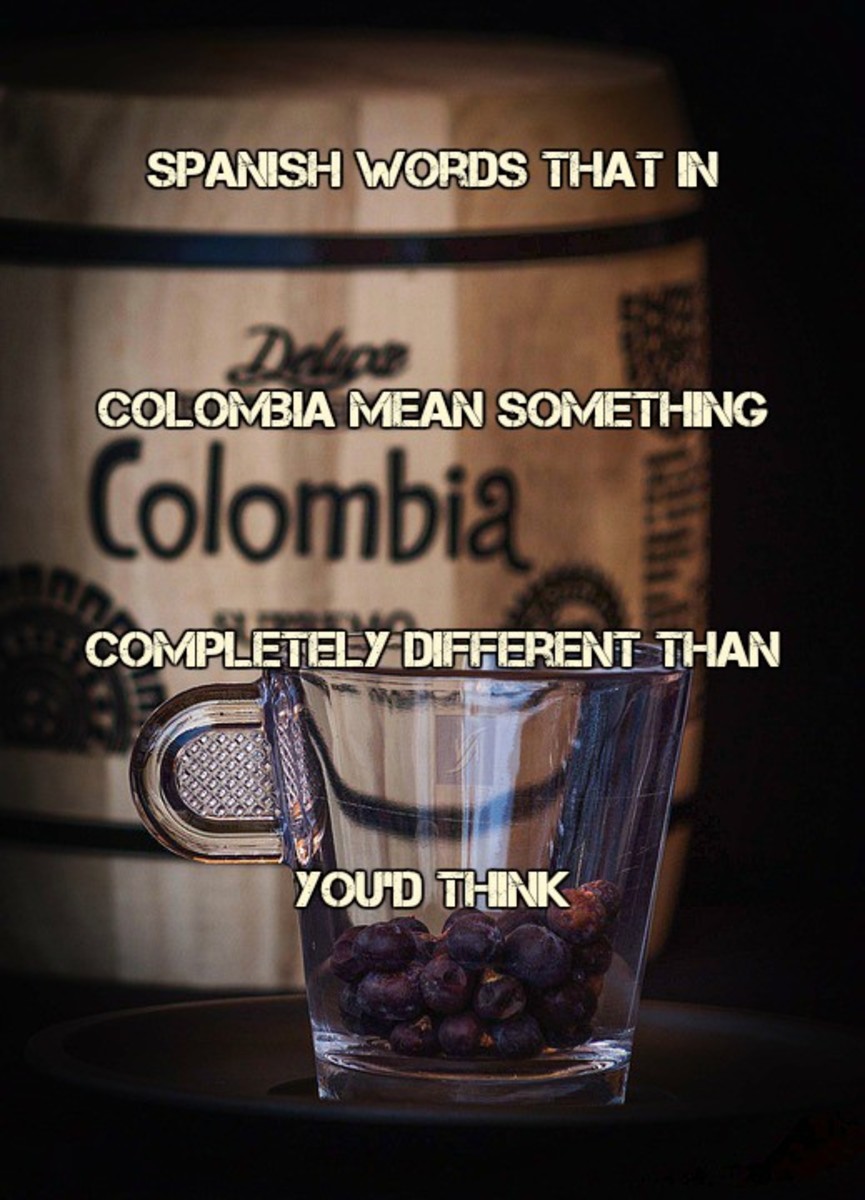Spanish Lesson Twelve: Telling Time

Before You Read
It's Sunday again!! This week we're going to be on lesson eleven. Oh my goodness, how the time flies!! I hope you guys have been learning Spanish "A Little At A Time". I hope you guys enjoyed the quiz in the last lesson. I'm pretty sure it was an eye opener for those who hadn't yet retained all the information. No big deal. These lessons are designed for you to go at your own pace and be as fluent as you'd like. Now for those hardcore Spanish geeks like me, you'll probably be sticking around for the duration of these lessons (that currently have no end). So let's get back to some more awesome grammar this week!! Yay!! I know it sounds boring, but grammar is very important in the Spanish language, just as important as it is in English. For those who need assistance, contact me whenever you need to.
These lessons are meant to be short and help you gain a steady fluency in the Spanish language. For those of you who have been reading, I hope you have found this information useful and are indeed retaining some of it. For those of you joining in for the first time, take a look at the previous lessons you've missed. The link is below.
Last week we discussed Spanish Prepositions and the verb tener. We also discussed Saying What You Have To Do. If you'd like to review that lesson, take a look at Lesson Eleven. In this lesson, we will discuss Time and Weather in the Spanish language and also Spanish Conjunctions.

Today's Vocabulary
Today we are discussing Spanish Conjunctions. They mirror that of English and can help us really give better detail in our sentences. These are words that you can definitely use in discussion. If you don't remember what a conjunction in English is, I don't blame you. Sometimes it takes a reminder, check out this School House Rock Video.
El lunes: Monday
El martes: Tuesday
El miércoles: Wednesday
El jueves: Thursday
El viernes: Friday
El sábado: Saturday
El domingo: Sunday
El segundo: Second
El Minuto: Minute
La hora: Hour
El día: Day
La semana: Week
La mes: Month
El año: Year
La Década: Decade
El mañana: Morning
La tarde: Afternoon
La noche: Evening/Night
La fin de semana: Weekend
Ya: Already, Yet*
Todavía no: Not yet
Jamás: Ever, never
Nunca: Never
Entonces: Then
Que*: Than
O/U*: Or
Y/E*: And
Pero: But
Cuando: When
En Cuando: As soon as
Hasta/ Hasta Que: Til/Until
Tan Pronto Como: As soon as
Ni... Ni*: Neither... Nor
O... O*: Either... Or
Mas*: However
Sino: But, rather
Excepto: Except
Note: There are many more conjunctions that can be added to this list, however these are the most common. We may revisit them in a later lesson.

Warm-Up
Read the following chart on discussing time and what phrases coincide with normal phrases like "a quarter after the hour", "thirty minutes past the hour", "Midnight", and more...
Time of Day
| Translation
|
|---|---|
Midnight
| Medianoche
|
Noon
| Mediodía
|
?:30*
| Media
|
?:45*
| Menos cuarto
|
?:15*
| Cuarto
|
1:??*
| La Una
|
Spanish Conjunctions
Okay! So I'm trying to introduce you all to some other parts of Speech in Spanish for future use. The Spanish Conjunctions are very useful in helping you convey and idea. It's pretty much the same idea when using conjunctions in English. Below I am going to explain the asterisks next to several of the words in the list. These will help you understand how to use them in a sentence.
Ya literally means "already" and is used in awkward way in the Spanish language. It's pretty interesting though because ya is usually used to express some kind of urgency. A common phrase using ya is Ya me voy, which translates to Already I go. However it's understood as "I'm coming already." I like the word ya and enjoy saying it. Look online if you'd like to see other uses of it.
Que does not mean "what", Qué means what. Note the accent. Que is used in several different ways in sentences. It can be used to compare two things, to affirm, or to emphasis "that" in a sentence structure. Here's an expample
Linda es más listo que Robert. Lind is more smart (smarter) than Robert.
O/U both mean "or" in Spanish. They can also be placed in a sentence to emphasize "either... or". U is used exactly like O but only if you have another "o" or "ho" sound following O. Here is one example of each rule.
O Quiere mirar la televisión o la película. Either he wants to watch (the) telvision or the movie.
¿Debo decir buenos dias u hola? Should I say good morning or hello?
Y/E both mean "and" in Spanish. E appears when an "i" sounds follows y.
Quiero mirar la pelicula e invitar mi amigo. I want to watch the movie and invite my friend.
Ni... Ni is the best translation for Neither... Nor in Spanish. The two words must place placed after the first verb and before the second verb of the sentence to signify you don't want to do either activity. The other way will directly mean "Neither...Nor". Take a look at these examples.
No Quiero limpiar los platos ni limpiar los vasos. I don't want to wash the plates or wash the cups. (When using the negative, Ni is used instead of O)
Todo el mundo no quiere comer ni los tacos ni los burritos. Everyone (literally meaning "all the world") wants to eat neither the tacos nor the burritos.---> This is confusing I know, but that no helps you understand everything is in the negative. The no is basically ignored. Also remember that you cannot have two conjugated verbs back to back. That is why comer (to eat) is un-conjugated.
Mas does not mean more, Más means more. So take note of the accent. This is the note I wished to make for this word.
Qué hora es?
¿Qué hora es? translates to "What hour is it?" This is the expression to ask when you need to know what time it is. If you're asking a stranger make sure you use proper manners when approaching them:
Excuse me sir: Perdóname Señor
Excuse me ma'am: Perdóname Señora
When someone answers you they will answer Es la... or Son las "it is" and tell you the time using some of the words in your chart. If the hour is one o' clock, midnight, or noon they will say Es la. It it is not on the hour, it's a bit more complicated. Son las will be used in those cases.
Es la una de la mañana. It is one in the morning. ("one" is expressed using una when telling time. Always used that number to express "one)
Son las dos y media de la tarde. It is 2:30 in the afternoon.
Son las dos menos cuarto de la tarde. It is 1:45 in the afternoon.---> It is 2 (minus quarter). A quarter is 15 minutes, so when you subtract that you get 1:45.
Son las dos y cuarto de la tarde. It is 2:15 in the afternoon.---> It is 2 (+quarter). A quarter is 15 minutes, when we add we get 2:15
Son las dos y veinte y cinco de la tarde. It is 2:25 in the afternoon.---> It is 2 (+25). When expressing any other times you must use the regular numbers to express them. Always use y to separate the hour and time. Think of it as representing the colon on your clock.
Note: You don't have to specify morning, night, or afternoon if you don't want to, but if you do, make sure you say *De la...* to proceed the word. This phrase goes in at the end of your sentence.
Cómo estoy escribiendo este artículo, es la una y veinte de la tarde. As I am writing this article, it is 1:20 in the afternoon.
If you'd like some more work on this, check out this Spanish Clock online.

Homework
Your homework for today is watch the video below that corresponds with Lesson Seven: Essential and Irregular Verbs. It's a short video I found on youtube by senorbelles. He's really awesome and this video will definitely help you understand irregular verbs. Take a look!!
Also in the coming lessons we will be discussing a great deal more about grammar and how to say things such as:
- What Should You Do?
- What Do You Want To Be When You Grow Up?
- What Do You Like And Dislike?
Next week we will be discussing Saying What You're Going To Do ! Make sure you show up for that one! :)
Links Used As References
- Spanish Booster
- Spanish II: Conjunctions
A conjunction joins two phrases (basically two sentences) together. The most common conjunctions are discussed in this section. In some cases, an explanation is necessary - Spanish Conjunctions - Conjunciones - Spanish for Beginners - e Learn Spanish Language
Spanish for beginners: an introduction to conjunctions. - Telling time in Spanish
Free on-line Spanish flashcards with sound for learning basic vocabulary like foods, clothing, furniture, body parts, cooking, school, animals, transportation airport illness etc. includes quizzes








